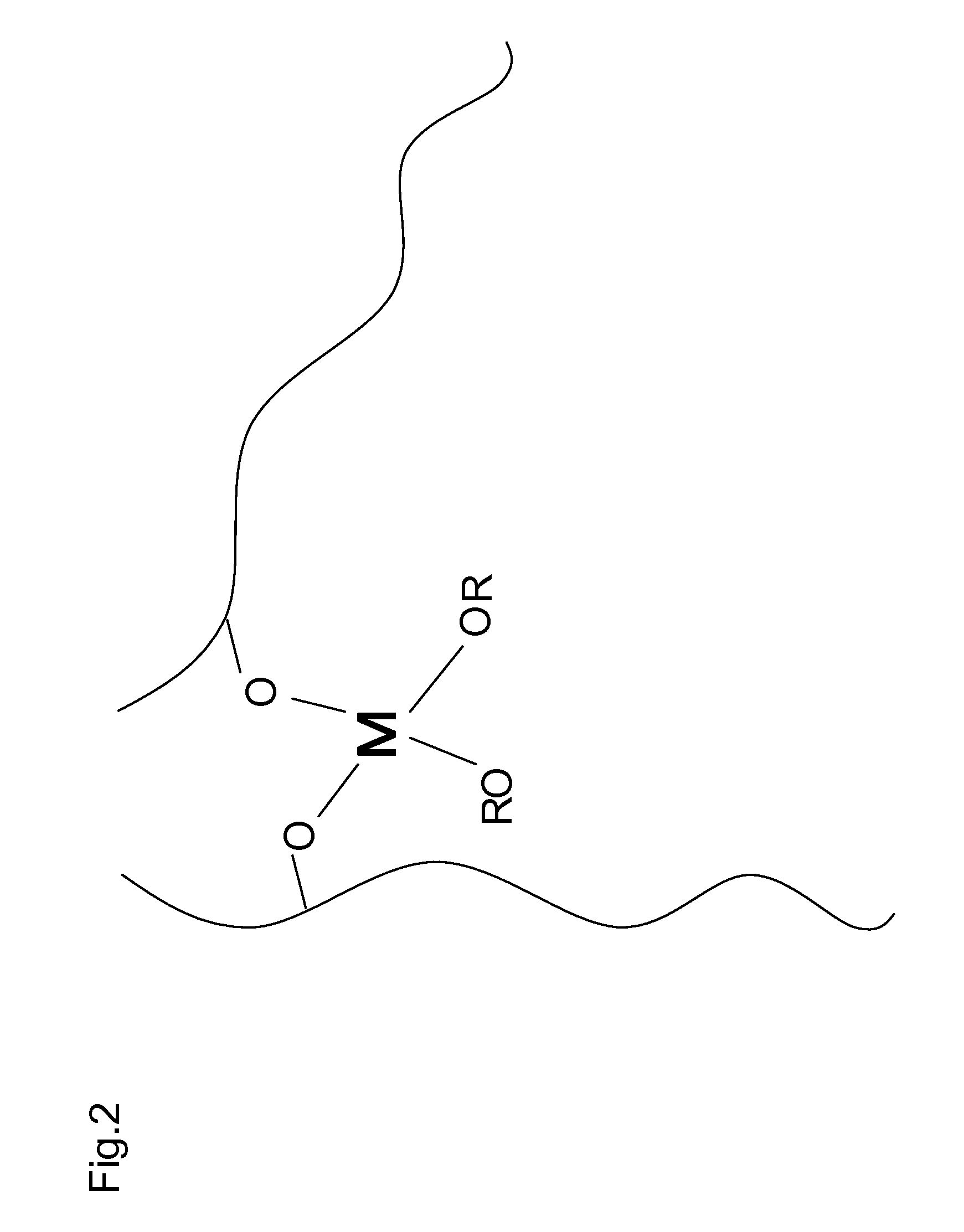Insulating thin film, formation solution for insulating thin film, field-effect transistor, method for manufacturing the same and image display unit
a technology of formation solution and insulating thin film, which is applied in the direction of thermoelectric devices, solid-state devices, radiation controlled devices, etc., can solve the problems of insufficient fet properties of insulating layers, inability to obtain insulating properties in sufficient quantities, and inability to produce fet properties
- Summary
- Abstract
- Description
- Claims
- Application Information
AI Technical Summary
Benefits of technology
Problems solved by technology
Method used
Image
Examples
example 1
[0091]1 g of Tetra-n-butyl titanate ((nBuO)4Ti) as a metallic compound, 1.5 g of polyvinyl phenol (PVP) as a polymer compound and 2 g of methylolmelamine as an organic molecule were respectively solved in n-butanol, toluene / n-butanol and toluene / n-butanol. Moreover, the above materials were mixed by dipping carefully while they were stirred under an Ar atmosphere. Thus, an orange colored solvent was obtained. Furthermore, the formation solution for the insulating thin film was obtained as a transparent orange colored solvent by putting the obtained orange colored solvent through a PTFE filter with pore sizes of 0.2 μm.
[0092]2 ml of the formation solution for the insulating thin film was spin coated on a glass substrate, dried at 90 degrees Celsius for 10 minutes and baked at 120 degrees Celsius for 1 hour. Thus, the insulating thin film with a thickness of 800 nm was obtained.
[0093]The obtained insulating thin film was analyzed by XPS. The inside of the insulating thin film was anal...
example 2
[0096]A self-assembled monolayer 31 made of octadecyltrichlorosilane (OTS) was formed on the surface of the insulating thin film obtained in Example 1. First, the surface processing was performed for 5 minutes on the insulating thin film of Example 1 using a UV / ozone irradiation device and the surface had hydrophilic properties. The obtained contact angle of pure water on the surface was 5.4°. Furthermore, the insulating thin film having hydrophilic properties on its surface was dipped for one night in a dry toluene solvent of OTS. Thus, the self-assembled monolayer 31 was obtained. The contact angle of pure water of the surface of the obtained self-assembled monolayer 31 was 103°. The surface was observed using AFM (Atomic Force Microscope), then, a coverage of OTS was 100%.
example 3
[0097]1 g of a solvent having diisopropoxybis titanium (triethanolaminato) at 80% as a metallic compound, 1 g of polyvinyl alcohol (PVA) as a polymer compound and 2 g of 3-amino-1,2,4-triazole as an organic molecule were respectively solved in water. Moreover, the above materials were mixed by dipping carefully while they were stirred under an Ar atmosphere. Thus, a colorless solvent was obtained. Furthermore, the formation solution for the insulating thin film was obtained as a transparent solvent by putting the obtained colorless solvent through a PTFE filter with pore sizes of 0.2 μm.
[0098]2 ml of the obtained formation solution for the insulating thin film was spin coated on a glass substrate, dried at 90 degrees Celsius for 10 minutes and baked at 150 degrees Celsius for 1 hour. Thus, the insulating thin film with a thickness of 1000 nm was obtained.
[0099]The obtained insulating thin film was analyzed by XPS. The inside of the insulating thin film was analyzed by etching for 10...
PUM
| Property | Measurement | Unit |
|---|---|---|
| relative permittivity | aaaaa | aaaaa |
| relative permittivity | aaaaa | aaaaa |
| temperature | aaaaa | aaaaa |
Abstract
Description
Claims
Application Information
 Login to View More
Login to View More - R&D
- Intellectual Property
- Life Sciences
- Materials
- Tech Scout
- Unparalleled Data Quality
- Higher Quality Content
- 60% Fewer Hallucinations
Browse by: Latest US Patents, China's latest patents, Technical Efficacy Thesaurus, Application Domain, Technology Topic, Popular Technical Reports.
© 2025 PatSnap. All rights reserved.Legal|Privacy policy|Modern Slavery Act Transparency Statement|Sitemap|About US| Contact US: help@patsnap.com



